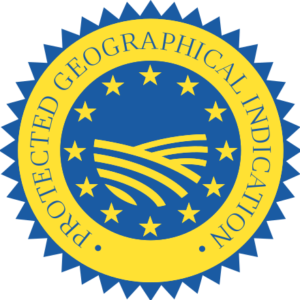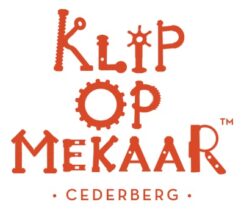There has been some speculation around whether South African products, such as Rooibos, will continue to enjoy Geographical Indicator (GI) status following the UK’s withdrawal from the European Union.
According to Dawie de Villiers, legal director for the the SA Rooibos Council (SARC), the short answer is “yes”.
“By its inclusion in the Geographical Indication Protocol of the Economic Partnership Agreement (EPA) between the Southern African Customs Union (SACU) and the European Union (EU), Rooibos is currently protected as a GI in the EU.  A GI links a product to a specific geographical area, which indicates the origin of where the product is produced, processed or prepared. This means that the word ‘Rooibos’ or ‘Red Bush’ can only be used for Rooibos tea imported from the winter rainfall areas of the Western and Northern Cape.
A GI links a product to a specific geographical area, which indicates the origin of where the product is produced, processed or prepared. This means that the word ‘Rooibos’ or ‘Red Bush’ can only be used for Rooibos tea imported from the winter rainfall areas of the Western and Northern Cape.
This protection will last for as long as the EPA (or a successor agreement) remains in force.
“However, if Rooibos is to be included in the GI Register of the EU, it means that protection becomes permanent. The SARC, along with the Department of Trade and Industry (dti) have applied for inclusion of Rooibos in the GI EU Register and await approval from the EU Commission.
Since the EU has already accepted Rooibos as a GI under the EPA, we do not foresee any complications.
“Should we receive the green light, the industry then has the right to use the EU logo for Geographical Indication purposes. This logo is well-recognised by consumers in Europe and its use will provide an indication of the value of Rooibos as a unique product. In addition, when trademark searches are done in the EU register, it will confirm Rooibos as a protected name and registered GI, which isn’t possible at the moment,” he says.
The inclusion of Rooibos won’t lead to additional protection in non-EU countries, but it is the intention of the SARC to use the EU GI once registered, to continue the process with the World Trade Organization (WTO) and the World Intellectual Property Organization (WIPO) to secure the registration on an international level.
De Villiers further points out that the Transition Agreement signed between the UK and SACU (with Mozambique included), also affords other products included in the GI Protocol of the EPA, continued protection in the UK after BREXIT. Similarly, UK GI’s (e.g. Stilton Cheese) will remain protected in South Africa.
Another win for the industry is that Rooibos will be receiving its own Harmonised Systems (HS) code, which will allow the industry to accurately track the movement of the product around the globe.
“Every product in the world must be accompanied by an HS code when it is exported or traded. Up to now, Rooibos was grouped with other products in the legume category, which made it difficult to track the exact volume and movement of the product,” explains de Villiers.
“Once it leaves our borders, each country, gives Rooibos another code under the legume category, making it problematic to monitor. Considering the Traditional Knowledge and GI agreements on Rooibos it has become a priority to adequately address the issue.”
Working with the DTI and SA Revenue Services (SARS) – responsible for this legislation – the SA Rooibos Council has obtained a Rooibos-specific HS code for South Africa, where bulk Rooibos, packed Rooibos, Rooibos extract, etc. will be further classified. As a next step, it has applied for an international code with the World Trade Organisation (WTO), which means that Rooibos will have the same HS code everywhere in the world. This will allow the industry to better track the product and enforce geographical indication.
It will also help to ensure that no Rooibos is moved without being levied for benefit-sharing purposes.
The Rooibos industry, National Khoi-San Council (NKC) and the South African San Council (SASC) signed a first of its kind in the world, access and benefit-sharing (ABS) agreement in November last year, which allows the Khoi and San communities to benefit from the sale of Rooibos.
As a signatory to the Nagoya Protocol, South Africa requires industries that trade in indigenous biological resources, such as Rooibos, to share benefits with traditional knowledge holders in a fair and equitable way.
“Obtaining an international HS code will be a milestone for the industry as the international community doesn’t normally provide global codes for relatively small industries, such as Rooibos. However, we’ve been successful thus far and should be able to share some more good news in the coming months,” remarks de Villiers.
Notes to this article:
Rooibos was first trademarked in 1994 in the US by Dr Annique Theron, but she later sold the right to a company called Burke International that registered the name ‘Rooibos’ as a trademark with the US Patent and Trademark Office. As the use of Rooibos became more popular, Burke demanded that companies either pay fees for use of the name or cease its use.
In 2005, the American Herbal Products Association and a number of import companies succeeded in defeating the trademark through petitions and lawsuits. The matter was settled out of court when Burke surrendered the name to the public domain.
In 2013, an application was made by a French company to register Rooibos as a trademark in respect of beverages in France. The application attracted the attention of the then Minister of Trade and Industry, Rob Davies, who strongly opposed the application and exercised various legal options to strengthen the protection of the Rooibos name in SA.
Later in September 2013, the SA government took the first major step in protecting the use of the term ‘Rooibos’. In the Government Gazette (at that time), Davies published the final Merchandise Marks Act prohibition notice on the labelling of Rooibos products and rules of use for ‘Rooibos’, ‘red bush’, ‘rooibostee’, ‘rooibos tea’, ‘rooitee’ and ‘rooibosch’.
The notice set out the terms under which the Rooibos mark could be used – the name ROOIBOS can only be used to refer to the dry product, infusion or extract that is 100% pure Rooibos – derived from Aspalathus Linearis – and that has been cultivated or wild-harvested in the geographic area as described in this application. The rules do allow for Rooibos to be blended with teas, infusions and other blends.
In 2014, Rooibos tea was granted geographical indication (GI) status in the EU. This gave Rooibos tea manufacturers of South Africa full ownership of the Rooibos name. GI status meant that only products produced in those areas that are approved by the industry, could be marketed under those names. This was significant, given the popularity Rooibos had acquired in Europe in recent years.
In June 2016, an Economic Partnership Agreement (EPA) was signed between the European Union and six Southern African Development Community (SADC) countries, namely South Africa, Botswana, Lesotho, Mozambique, Namibia and Swaziland. For SA, the EPA extended the existing market access to new products such as fruit and wine while further protecting the GI status of, among others, Rooibos and Honeybush.
GIs are valuable assets and their protection and enforcement constitute a crucial step to retain the related competitive advantage of a product.

